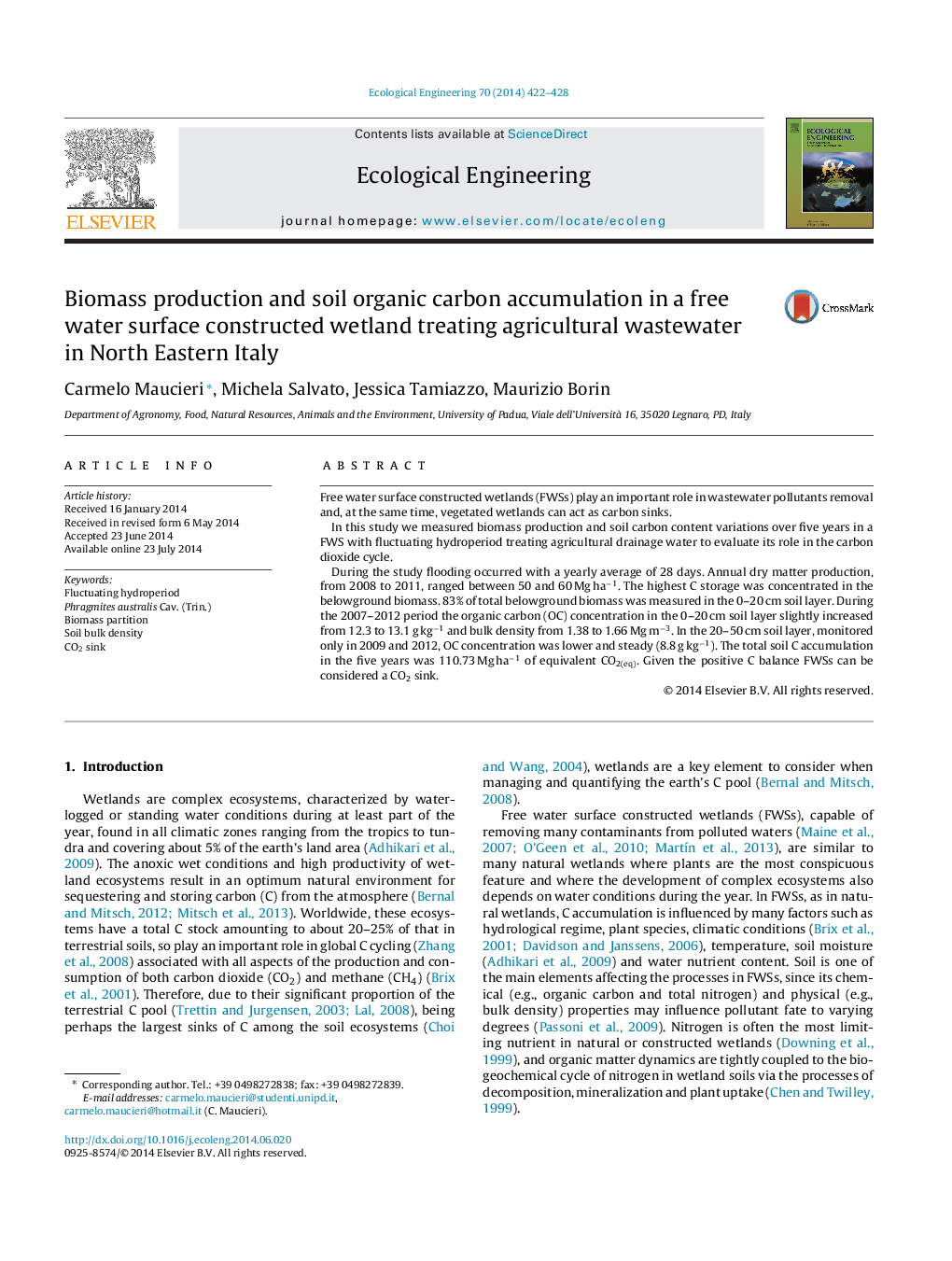| Article ID | Journal | Published Year | Pages | File Type |
|---|---|---|---|---|
| 6302215 | Ecological Engineering | 2014 | 7 Pages |
â¢Surface flow wetland annual dry matter production ranged between 50 and 60 Mg haâ1.â¢Belowground biomass contained the 75.3% of the total biomass dry matter.â¢The first 20 cm soil layer content the 83% of total belowground biomass.â¢Soil organic carbon content increased during the time.â¢The wetland accumulated 110.73 Mg haâ1 of equivalent CO2 in five years.
Free water surface constructed wetlands (FWSs) play an important role in wastewater pollutants removal and, at the same time, vegetated wetlands can act as carbon sinks.In this study we measured biomass production and soil carbon content variations over five years in a FWS with fluctuating hydroperiod treating agricultural drainage water to evaluate its role in the carbon dioxide cycle.During the study flooding occurred with a yearly average of 28 days. Annual dry matter production, from 2008 to 2011, ranged between 50 and 60 Mg haâ1. The highest C storage was concentrated in the belowground biomass. 83% of total belowground biomass was measured in the 0-20 cm soil layer. During the 2007-2012 period the organic carbon (OC) concentration in the 0-20 cm soil layer slightly increased from 12.3 to 13.1 g kgâ1 and bulk density from 1.38 to 1.66 Mg mâ3. In the 20-50 cm soil layer, monitored only in 2009 and 2012, OC concentration was lower and steady (8.8 g kgâ1). The total soil C accumulation in the five years was 110.73 Mg haâ1 of equivalent CO2(eq). Given the positive C balance FWSs can be considered a CO2 sink.
